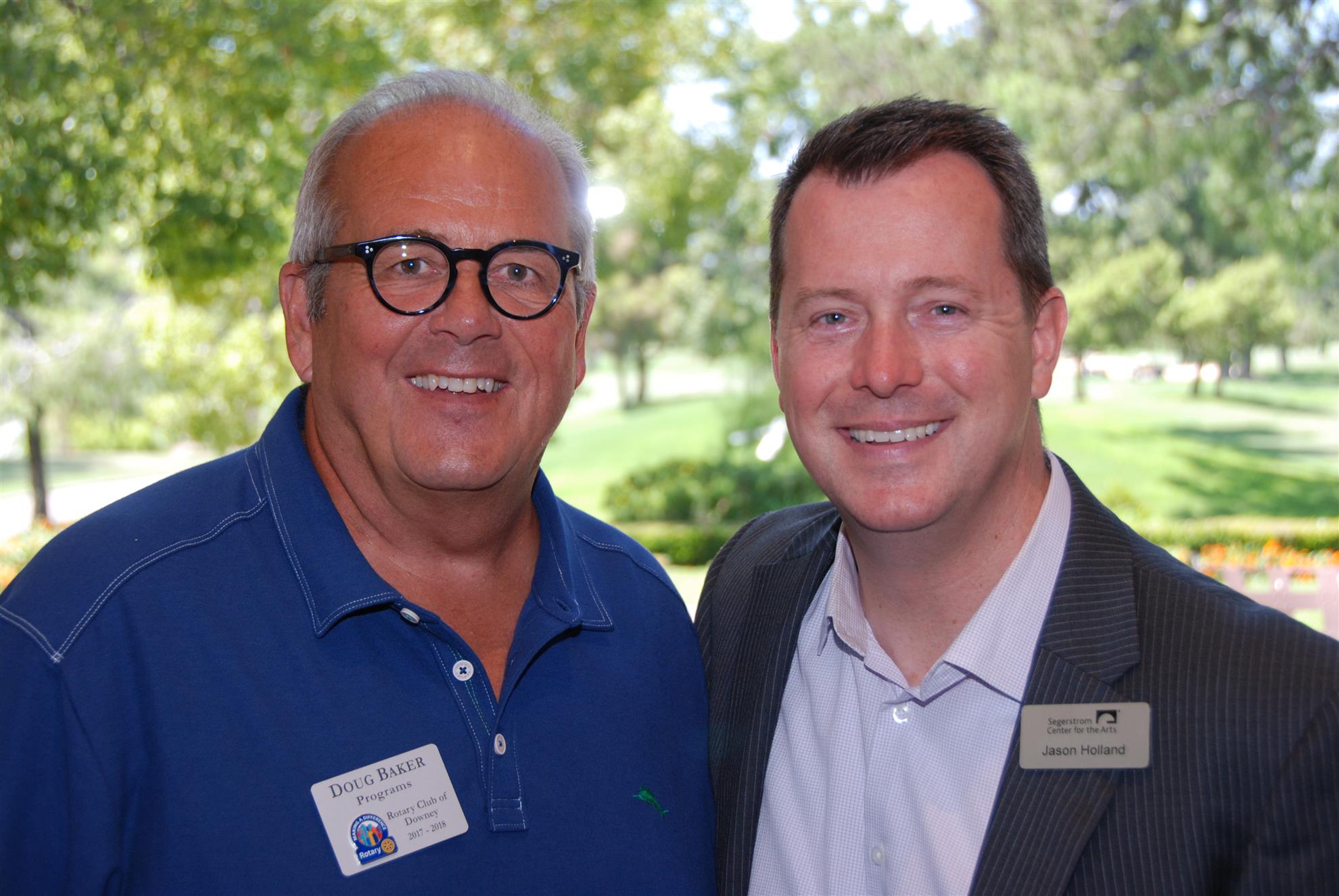by Lorine Parks
“Segerstrom Center for the Arts is thrilled to launch a new dance and music school for all kids with disablitiles!”
Doesn’t sound like a headline from the Segerstrom Center for the Arts? Expecting a symphony concert, or Tony Bennett? A video showed us the Center’s newest community outreach, as detailed by Jason Holland, Vice President in Charge of Community Engagement.
Doesn’t sound like a headline from the Segerstrom Center for the Arts? Expecting a symphony concert, or Tony Bennett? A video showed us the Center’s newest community outreach, as detailed by Jason Holland, Vice President in Charge of Community Engagement.
As Doug Baker said in introducing Jason, “Our programs this year will make us aware of things and people we think we know, but we don’t.”

“We offer an all-inclusive school for children with disabilities,” said Jason, “like visual impairment, autism, cerebral palsy, and Down’s syndrome, as well as for children that are developmentally typically held back from exploring movement, music, and creativity.”
“While the kids are dancing,” he continued, “we look forward to giving parents and caregivers the space and the time to build a peer-to-peer support network.” Pictures showed happy kids swaying, even crawling to the music, while a physical therapist as well as a dance instructor moved among them. A service dog was also in the ranks, to complete the informal picture.
“While the kids are dancing,” he continued, “we look forward to giving parents and caregivers the space and the time to build a peer-to-peer support network.” Pictures showed happy kids swaying, even crawling to the music, while a physical therapist as well as a dance instructor moved among them. A service dog was also in the ranks, to complete the informal picture.
Long recognized as the jewel of the performing arts in Orange County, the Segerstrom Center has a vision that mandates helping children explore their full physical, social, and creative potential through high quality, joyful dance and music instruction. “We believe deeply in making the arts accessible to everyone,” said Jason.
Other innovative ways to bring the arts into the lives of its citizens include plans to transform the Plaza in front of the complex. Starting about Hallowe’en, it will become a temporary stage, for 30 weeks of live programming. As a venue for free staged performances, the striking Julianne and George Argyros Plaza offers flowing outdoor space featuring meandering paths under lush trees, anchored by a community stage and three distinct groves, each offering shaded seating.
For 30 weekends a year, the Plaza will present live music films, performances and events highlighting local artists and cultural organizations. The Plaza will offer free Wi-Fi, enhanced lighting and sound, and an open air café nestled beneath a dramatic ramped walkway that ascends to the existing Segerstrom Hall Terrace.
In the question period, Harold Tseklenis, no doubt thinking of Downey’s own Theatre and Symphony performances, asked how the Center is funded. It was a surprise to learn that 80% of funding comes from ticket sales. The other 20% is from donations and grants, private, government, corporate. “The Center relies on the support of community members–individuals, corporations and foundations,” said Jason, “to provide world-class performing arts experiences to the people of Southern California.”
A major difference from Downey’s situation is that the Center was privately funded when it was built, and still is a privately owned non-profit corporation. But in the less than three decades since it opened, the Segerstrom has fielded the remarkable Pacific Symphony which presents more than 100 concerts a year. And that is an addition to the Broadway productions and entertainments at Segerstrom Hall.
The Plaza, a 21st century town square that will be activated by the energy of community members from throughout Orange County and beyond, might be an idea for Downeyites to contemplate.
